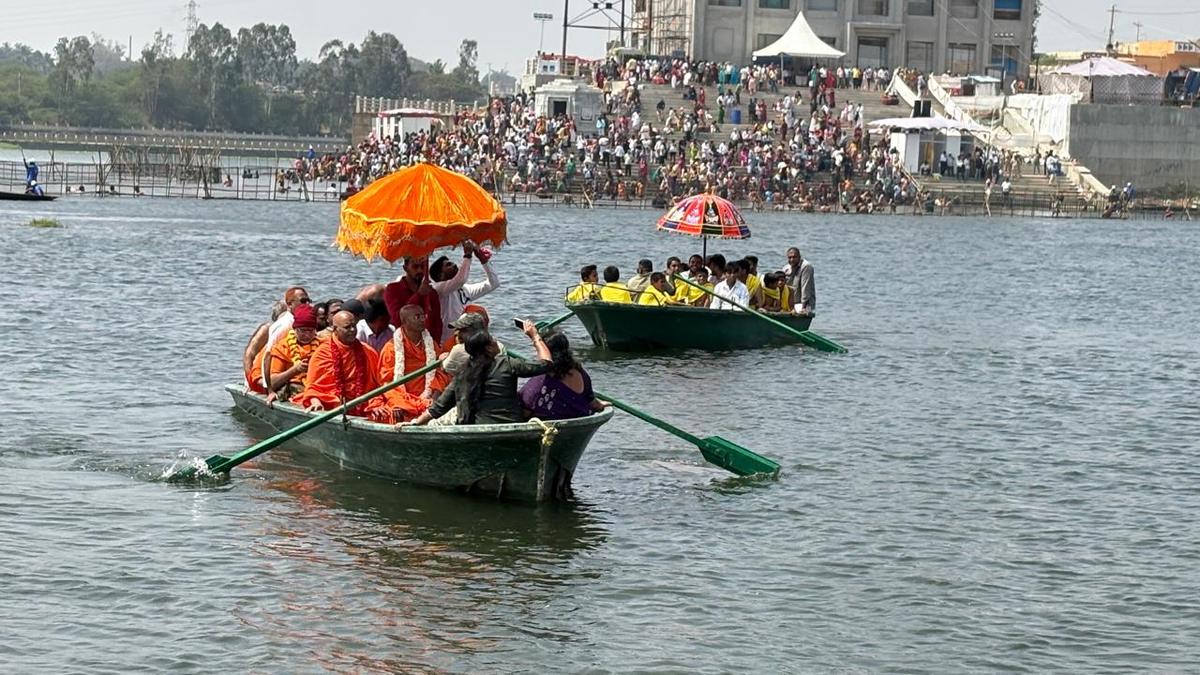
Karnataka’s Kumbh Mela: Devotees take a holy dip at T.Narsipur as three-day event begins
The Hindu
The 13th Kumbh Mela at T.Narsipur, a sacred confluence of rivers, began with prayers, rituals, and cultural events.
The 13th Kumbh Mela at T.Narsipur — which is at the confluence of rivers Cauvery, Kapila and the invisible and mythical Spatika Sarovara – began on Monday (February 10, 2025).
People prayed at Agastyeshwara, Gunja Narasimhaswamy, Chowdeshwari and Hanuman temples before setting out for the bathing ghats to take a holy dip. There were religious rites including Gana Homa at Agastyeshwara temple followed by maha mangalaarti.
Seers including Somshewaranath Swamiji of the Mysuru branch of Adi Chunchanagari Mutt, Shivanandapuri Swami of Kaginele Mutt and others led the devotees in taking the holy dip to mark the inauguration of the three-day event.
Located about 35 km from Mysuru, T.Narsipur is considered as sacred as Prayagraj in view of the confluence of the three rivers. Besides, the town has a hoary past and is replete with ancient temples, of which the Gunja Narasimhaswamy temple on the banks of the Cauvery and Agastyaehwara temple, are the most famous; the latter being associated with sage Agastya.
The temples are reckoned to belong to the late Ganga or Chola period though they were expanded by the Hoysalas, Vijayanagar rulers and further embellished by the Wadiyars of Mysore.
The Kumbh Mela here is of recent origin and began in 1989 at the initiative of Suttur seer Sri Shivaratri Deshikendra Swamiji and other pontiffs. The objective is to encourage devout to take a dip at the confluence at T.Narsipur in case they are unable to make it to the Kumbh Melas that take place at Prayagraj, Haridwar, Ujjain or Nashik.
As a result, the Kumbh Mela at T.Narsipur takes place once in 3 years coinciding with the event at the four places where the tradition has a hoary past.













